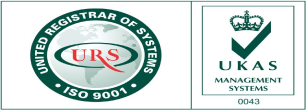Bridging the Physical and Digital Worlds for Smarter, Faster, and More Reliable Production
Nowadays, in the age of digital revolution, the manufacturing industry is changing more rapidly than ever. What used to be traditional, manual production has now evolved to smart, automated, and linked production ecosystems. The Digital Twin is a revolutionary idea in the center of this development.
What Is a Digital Twin?
Digital Twin is a virtual representation of physical system, process or object. It is a reflection of the behavior, performance and interactions of real-life manufacturing systems using real time data.
A digital twin enables engineers and decision-makers to visualize, monitor, and optimize the performance of both equipment and processes prior to taking place in the shop floor through the combination of technologies: IoT, simulation, AI, and analytics.
Imagine it as a sort of a living digital model which is developing as its physical counterpart is and anticipates problems, decreases downtimes, and allows smarter decisions.
Conventional Customers: Manufacturing vs. Digital Twin-Driven Automation.
- Aspect Conventional manufacturing Digital twin-enabled automation.
- Data Usage Data gathered manually or after production Live on sensor data and systems.
- Decision-Making Experience-based or stagnant reporting Predictive and data insights.
- Maintenance Reactive (repair failure) Predictive and proactive.
- Product Development Long iteration cycles and Physical prototyping.
- Efficiency Low visibility of bottlenecks in the processes Complete process visibility and optimization.
- Quality Control Manual Inspection AI-based and automated quality analytics.
- This digital transformation of manufacturing with traditional twin is redefining the way companies design, manufacture and support products throughout the life cycle.
Digital Twins: How to empower Smart Manufacturing.
Predictive Maintenance: Digital twins are used to predict possible failures using operational data, and thus planned maintenance is provided rather than expensive unplanned downtimes.
Process Optimization: Real time simulation enables engineers to test modifications in real time enhancing efficiency, energy consumption and throughput in production.
Faster Product Innovation: Physical prototyping can be minimized by simulating the performance of a product at an early stage in the design process, which speeds up the time-to-market.
Enhanced Collaboration: Multi-team data integration between design, production, and service teams is a way to make sure that all stakeholders are using a single source of truth, and that the source of truth is correct.
Sustainability Gains: Optimization of production cycles results in minimized wastages, reduced energy usage, and minimized environmental impact.
The Siemens Digital Twin Technology Role.
Digital twin technology is realised with the help of solutions such as Siemens Simcenter, NX, and Teamcenter. They assist manufacturers in developing interconnected simulation-driven systems, where virtual and physical systems are in agreement.
At machine level performance to factory level automation, digital twin ecosystems of Siemens allow companies to constantly enhance the design, manufacturing and operational performance – bridging the gap between the model of the product engineering and its actual production.
The Future Future: A Connective, Autonomous manufacturing world.
Digital twin is not a fad, it is the basis of Industry 4.0.
With the adoption of automation, cloud connectivity and AI by manufacturers, digital twins will be the nervous system of intelligent factories.
Companies that make an early investment in digital twin technology will gain strategic advantage, namely, they will be more agile, innovative and competitive in the more digital marketplace.
Conclusion
It is not only a matter of switching processes but also a matter of rethinking the ways we relate data, people, and processes once we start operating in automated manufacturing.
Digital Twin technology is the key that will turn the modern production lines into new intelligent and adaptive ecosystems. This is the future of manufacturing, it is digital, dynamic and insight-driven.


